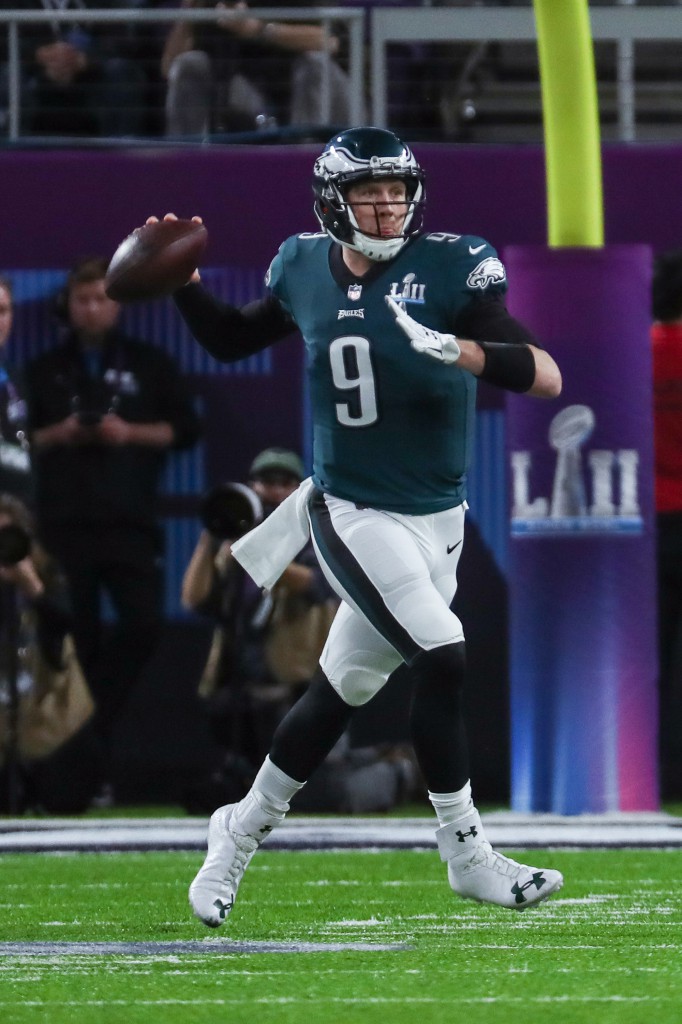Sports
Thanks to Doug Pederson, the Eagles are the NFL’s next dynasty
It’s not often that you see the New England Patriots worried and forced into irrational decisions. It’s not often that you see Patriot teams throwing laterals on kickoff returns and their quarterback blatantly missing his receivers at the end of the game. It’s not often that you see Tom Brady walking off the Super Bowl field with a loss. Actually, all three of these things rarely happen. On February 4, all three did—and that was because of Doug Pederson and the Philadelphia Eagles.
Less than two weeks ago, the Eagles proved themselves as the next NFL dynasty, dethroning the highly-respected New England franchise in the 2018 Super Bowl. Almost every expert predicted the Patriots would win. In the few scenarios that experts had the Eagles winning, it was because of their defense. The Eagles proved both wrong. They did beat the Patriots, held their own and did so with their offense, in an unanticipated manner. They marched down the field against the Patriots, combining innovation and skill to defeat the Bill Belichick game plan. They racked up an absurd 538 yards and punted only once. The Eagles were unstoppable.
 Anthony Behar | MCT Campus
Anthony Behar | MCT Campus Philadelphia Eagles quarterback Nick Foles drops back to pass on the first quarter against the New England Patriots Feb 4.
Ultimately, Doug Pederson has been the catalyst for the Eagles’ success. The Eagles lost starters Carson Wentz, Darren Sproles, Chris Maragos, Jason Peters, Caleb Sturgis and Jordan Hicks to injury this season. Without many of their best playmakers, the responsibility of winning football games was going to fall upon Pederson. Would he be able to create an environment for backups to succeed? Would he maternalize an offense without much star power? Could he cycle three able running backs in a productive way?
Whether it was throwing back-to-back screen passes in the NFC Divisional Round or the famous “Philly Special” play call on fourth-and-goal, Pederson made a name for himself with creative play calling. Unafraid to take chances, Pederson exhibited unique trust in his players, giving them confidence that rang out on the field. There was not a moment this playoffs that they looked nervous. Their ability to come together amongst all the adversity was a clear reflection of Pederson’s ability to connect with his players.
In a locker room with strong personalities, he was able to keep them on the same agenda. They bought into his pitch, playing hard night in and night out. Even in their losses to the Kansas City Chiefs and Seattle Seahawks (discounting the Week 17 loss to the Dallas Cowboys), the Eagles didn’t give up, losing both games by two touchdowns or less. It didn’t hamper their success either. After both of those games, they bounced back with resilient wins: Rookie kicker Jake Elliott nailed a game-winning 61-yard field goal with time expiring against the New York Giants, and Nick Foles posted 43 points despite an injury to Wentz against the Los Angeles Rams. Pederson has shown that he has the full coaching package—the ability to unite a team, compete no matter the circumstances and build a game plan that can defeat any caliber opponent.
Perhaps the most intriguing part of Pederson was his willingness to adapt. People look at the Eagles’ Super Bowl victory and instantly point out that Pederson was able take an average quarterback in Nick Foles and make him a Super Bowl MVP. Pederson did do a miraculous job, instituting read-pass-options, quick hitters and an uptempo offense to better fit Foles’ style. However, he did so much more.
The Eagles’ running back situation is a perfect example. Midway through the season, General Manager Howie Roseman acquired the Miami Dolphins’ star running back, Jay Ajayi. Pederson was tasked with managing a lineup that featured three new faces to the program this season and did so swimmingly. They fit together perfectly and Pederson was able to match all of three skill sets together—a physical back (LeGarrette Blount), an all-around back (Ajayi) and a speedster (Corey Clement).
Look no further than Nelson Agholor as another example, who totaled 648 yards in his first two seasons, yet pulled down 768 yards in his third year alone. In those first two years, Agholor looked nervous and helpless. But this year, he looked exactly the opposite, confident and sure-handed. He was dynamic and fast, combining magnetic hands with blazing speed. His progress was without a doubt thanks to Pederson’s continual inclusion of Agholor in the offensive game plan from day one.
On defense, he had to deal with the loss of Jordan Hicks, forcing linebackers Mychal Kendricks to step into a bigger role. Just a year ago, Kendricks tallied a mere 32 tackles and was disgruntled, requesting a trade this past offseason. Pederson put his trust in Kendricks, who thrived in defensive coordinator Jim Schwartz’s defensive scheme, posting 77 tackles, second on the team. Likewise, Najee Goode, who has primarily played special teams for much of his career, notched a career high 22 tackles. If it weren’t for Pederson’s ability to integrate these players amidst turmoil, the Eagles may not have their first ring.
It’s easy for NFL coaches to just stick to their system. It’s an ego thing. They want to win with their system. Pederson showed throughout the season that he was willing to change. He wanted to win with any system; it didn’t matter which one. That selflessness made him not just one of the best coaches in the NFL, but the best. And Pederson isn’t just here for one year. He’ll be back with the same team next year, plus all of their dynamic players who were injured. The Eagles and Doug Pederson are just getting started.
